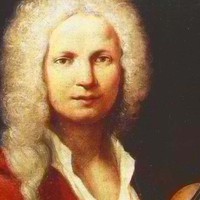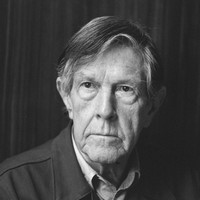Vivaldi’s Four Seasons



Antonio Vivaldi’s The Four Seasons makes a strong case as the Western canon’s most universally familiar music. Such widespread popularity is a double-edged sword: The Four Seasons’s ubiquity in popular culture has too often presented as harmless background music a fiendishly inventive work by a composer of terrific originality.
The concertos that make up The Four Seasons (Le quattro stagioni) appeared as the first four of twelve violin concertos published as Il cimento dell’armonia e dell’inventione (The Contest between Harmony and Invention), op. 8. Vivaldi composed them to accompany a set of four sonnets—“La primavera,” “L’estate,” “L’autunno,” and “L’inverno”—whose authorship is uncertain but generally attributed to Vivaldi himself. The sonnets’ tripartite structures align with the three movements of each concerto, which in turn provide vivid musical depictions of the corresponding text.
The Four Seasons evinces Vivaldi’s importance to the development of the Baroque concerto. His contributions to the genre, which total more than five hundred, defined the concerto form as a dialog between soloist and ensemble and established certain formal characteristics as standards in concerto writing. (They also established the concerto as a vehicle for instrumental virtuosity—fittingly so, given Vivaldi’s stature as one of the finest violinists of his generation; more than two hundred of Vivaldi’s concertos are for violin.) Vivaldi’s concertos served as significant models for no less than Johann Sebastian Bach’s Brandenburg Concertos, among other major works of the Baroque period.
But of equal importance to the formal innovations manifested in works like The Four Seasons are the breadth of their dramatic character and the extent of Vivaldi’s vision in imagining the expressive potential of the concerto form. The Four Seasons concertos are remarkable for their illustration of their subject matter, whether in depicting hunting horns and guns in Autumn or in the chilling texture of Winter, mimetic of the “cold in the icy snow/In the harsh breath of a horrid wind.”
Patrick Castillo ©2012

Antonio Vivaldi’s The Four Seasons makes a strong case as the Western canon’s most universally familiar music. Such widespread popularity is a double-edged sword: The Four Seasons’s ubiquity in popular culture has too often presented as harmless background music a fiendishly inventive work by a composer of terrific originality.
The concertos that make up The Four Seasons (Le quattro stagioni) appeared as the first four of twelve violin concertos published as Il cimento dell’armonia e dell’inventione (The Contest between Harmony and Invention), op. 8. Vivaldi composed them to accompany a set of four sonnets—“La primavera,” “L’estate,” “L’autunno,” and “L’inverno”—whose authorship is uncertain but generally attributed to Vivaldi himself. The sonnets’ tripartite structures align with the three movements of each concerto, which in turn provide vivid musical depictions of the corresponding text.
The Four Seasons evinces Vivaldi’s importance to the development of the Baroque concerto. His contributions to the genre, which total more than five hundred, defined the concerto form as a dialog between soloist and ensemble and established certain formal characteristics as standards in concerto writing. (They also established the concerto as a vehicle for instrumental virtuosity—fittingly so, given Vivaldi’s stature as one of the finest violinists of his generation; more than two hundred of Vivaldi’s concertos are for violin.) Vivaldi’s concertos served as significant models for no less than Johann Sebastian Bach’s Brandenburg Concertos, among other major works of the Baroque period.
But of equal importance to the formal innovations manifested in works like The Four Seasons are the breadth of their dramatic character and the extent of Vivaldi’s vision in imagining the expressive potential of the concerto form. The Four Seasons concertos are remarkable for their illustration of their subject matter, whether in depicting hunting horns and guns in Autumn or in the chilling texture of Winter, mimetic of the “cold in the icy snow/In the harsh breath of a horrid wind.”
Patrick Castillo ©2012

Antonio Vivaldi’s The Four Seasons makes a strong case as the Western canon’s most universally familiar music. Such widespread popularity is a double-edged sword: The Four Seasons’s ubiquity in popular culture has too often presented as harmless background music a fiendishly inventive work by a composer of terrific originality.
The concertos that make up The Four Seasons (Le quattro stagioni) appeared as the first four of twelve violin concertos published as Il cimento dell’armonia e dell’inventione (The Contest between Harmony and Invention), op. 8. Vivaldi composed them to accompany a set of four sonnets—“La primavera,” “L’estate,” “L’autunno,” and “L’inverno”—whose authorship is uncertain but generally attributed to Vivaldi himself. The sonnets’ tripartite structures align with the three movements of each concerto, which in turn provide vivid musical depictions of the corresponding text.
The Four Seasons evinces Vivaldi’s importance to the development of the Baroque concerto. His contributions to the genre, which total more than five hundred, defined the concerto form as a dialog between soloist and ensemble and established certain formal characteristics as standards in concerto writing. (They also established the concerto as a vehicle for instrumental virtuosity—fittingly so, given Vivaldi’s stature as one of the finest violinists of his generation; more than two hundred of Vivaldi’s concertos are for violin.) Vivaldi’s concertos served as significant models for no less than Johann Sebastian Bach’s Brandenburg Concertos, among other major works of the Baroque period.
But of equal importance to the formal innovations manifested in works like The Four Seasons are the breadth of their dramatic character and the extent of Vivaldi’s vision in imagining the expressive potential of the concerto form. The Four Seasons concertos are remarkable for their illustration of their subject matter, whether in depicting hunting horns and guns in Autumn or in the chilling texture of Winter, mimetic of the “cold in the icy snow/In the harsh breath of a horrid wind.”
Patrick Castillo ©2012

With a cushy job in his native Venice teaching violin at a well-endowed school for orphaned girls (many of whom were really the illegitimate offspring of aristocrats), Antonio Vivaldi was able to use his talented students to test out and refine his compositions, especially his hundreds of concertos. In 1725, Vivaldi’s publisher in Amsterdam released a set of twelve of those violin concertos under the title Il cimento dell’armonia e dell’invenzione (The Contest Between Harmony and Invention). Vivaldi named the first four concertos after the seasons, and he organized the musical ideas to correspond to descriptive sonnets. These interrelated works that we know simply as The Four Seasons live on as the crown jewels within Vivaldi’s incomparable catalog of solo concertos.
The sonnets offered Vivaldi ample opportunities for word painting, like how the first movement of Winter captures a scene of desolate cold and chattering teeth. The slow movement moves the scene to a cozy fire inside, while pizzicato raindrops continue to fall outside. Starting with hesitant, slippery steps on the ice, the finale builds to raging gusts of wind.
Aaron Grad ©2025

From early in his career, John Cage challenged the sonic limits of music, using everyday items as percussion instruments and doctoring pianos with foreign objects to create exotic new sonorities. He went on to redefine the very structure and sound of composed music, introducing silence and random operations of chance, and creating music that merged Asian philosophy with the Western canon. He is most famous for 4’33”, in which the performer “plays” a note-less score for four minutes and 33 seconds.
The String Quartet in Four Parts, from 1950, was a crucial step in Cage’s path from traditional forms of music toward his iconic, chance-driven scores. For the quartet, he returned to ideas first developed in his ballet The Seasons from 1947. Concepts of the four seasons, as drawn from Indian philosophy, shaped the structures of the two scores, and both works utilized what Cage came to call his “gamut” technique, in which pre-composed cells of motives generated the musical material. The string quartet applied this technique with more rigor and austerity, and added other formal devices of rhythmic organization and canon-like interrelationships. These constraints served, paradoxically, to unshackle the music from established conventions of harmony and form, and all the other expectations placed upon a composer after centuries of common practice. Within the “gamut” technique, Cage made a limited set of initial choices, which in turn shaped the details of the work, minimizing the role of the composer as the all-important driver of self-expression.
The austerity of String Quartet in Four Parts expands to the sonic palette, with the strings instructed to play without vibrato throughout. Starting in “Quietly Flowing Along,” representing summer and the energy of preservation, a pattern emerges in which harmonies progress in a sequence that has no linear logic, other than to support the top-line melodies. “Slowly Rocking” (corresponding to autumn and destruction) halves the basic rhythmic flow, and “Nearly Stationary” (winter; quiescence) halves it again, reducing the musical cells to their most raw and disembodied forms. The short finale, “Quodlibet,” evokes the rebirth and creation inherent in spring with faster motion and musical gestures that restore a semblance of melody and harmonic progression. The title, from the Latin for “what you please,” has been associated since the Renaissance with compositions that whimsically juxtapose familiar strains of music.
Aaron Grad ©2013
Please note: The performances of Vivaldi's Four Seasons on Thursday, February 27 at Temple Israel, Saturday, March 1 at Saint Paul's UCC and Sunday, March 2 at St. Andrew's Lutheran Church are currently SOLD OUT. Due to extremely high demand for this program, we have added a fourth performance on Friday, February 28 at Wooddale Church in Eden Prairie. Please follow the "Tickets" link above to purchase tickets to this additional performance.
Get driving directions and find nearby parking.
Find dining options close to the venue.
View seating charts to find out where you'll be seating.
Get driving directions and find nearby parking.
Find dining options close to the venue.
View seating charts to find out where you'll be seating.
